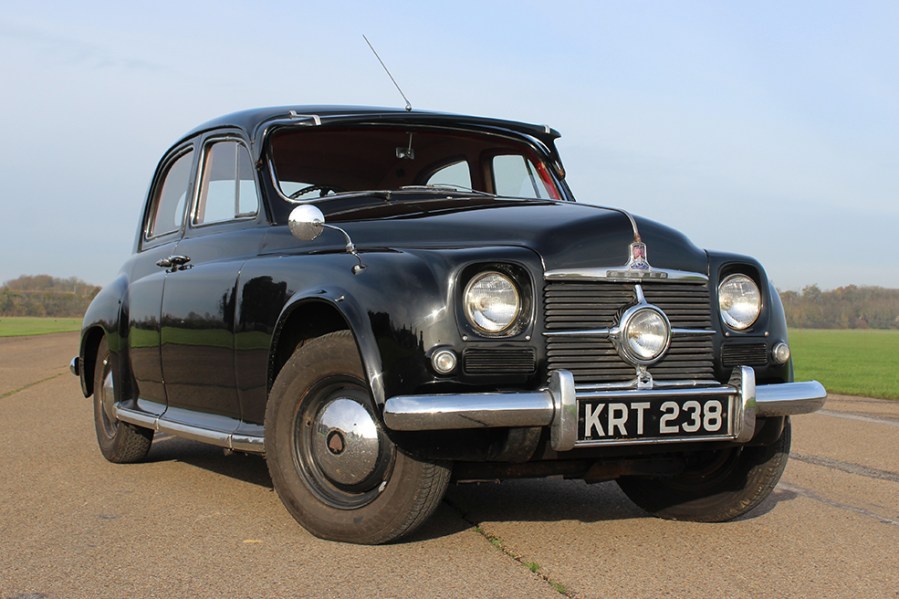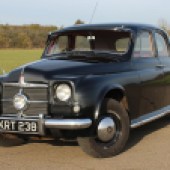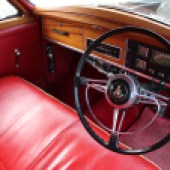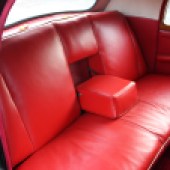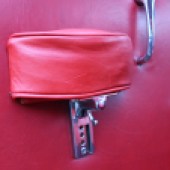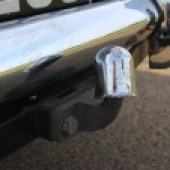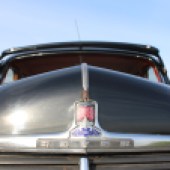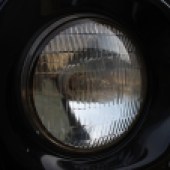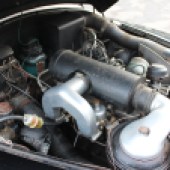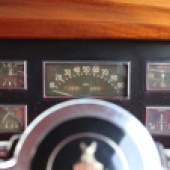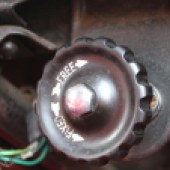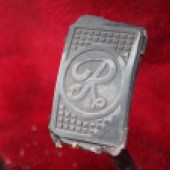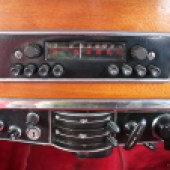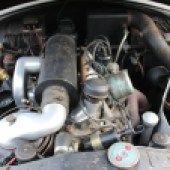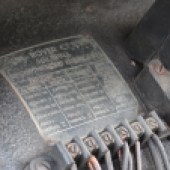The long-lived Rover P4 was a product of the 1940s but a forward-thinking design made it one of the best saloon cars of its era
Words: Sam Skelton Images: James Howe
Rover’s immediate post-war range was outdated. The P2 and P3 were carryovers from the pre-war range, and while the mechanicals were of use, the fact was that the bodies were desperately out of date. Rover took inspiration for its new model – the Rover P4 – from Studebaker, even going so far as to use the body of an imported Champion to disguise a chassis on test – creating the well-known ‘Roverbaker’ mule.
Buyers of the Rover P4 would have looked to the Riley RM range as a natural alternative, or maybe the 2.6 as production continued – or perhaps the Wolseley 6/80 and 6/90. The Ford Zephyr and Vauxhall Cresta were too racy for the sort of person who craved craftsmanship, and while a Humber Hawk undoubtedly had kerbside appeal, the Rover buyer would have felt the extra worth paying for their coach-built carriage over the fundamentally mass-produced Humber. These cars of integrity were bought by professional types – doctors, vets, solicitors, bank managers and the like – and represented the stolidity of Middle England.
The first Rover P4 was the 75 of 1949. Fitted with a single central fog lamp which gave it the nickname of ‘Cyclops’ (as in our pictures), the slender tail and sharper nose meant that it far more closely resembled the Studebakers from which it drew influence than later models.

Proportionally, not only was it different to its predecessor but to almost all other cars at the time – a large boot, rear seats ahead of the back axle and a cab-forward layout were all new at the time, but became well established parts of the motoring landscape.
Just one engine was offered for the first four years, a 2.1-litre six-cylinder developing 75bhp and leading to the formal name Rover 75. All Rover 75s were fitted with a freewheel clutch enabling the disengagement of drive once at speed, or to maintain fuel when the propshaft was moving more slowly than the wheels – much like the sprocket arrangement of a bicycle, power was only disconnected until applied once more by the driver. This would be a staple feature of the P4 range until 1959, when the introduction of an overdrive unit replaced the freewheel in Rover’s catalogues.
The grille was revised in 1952, with more conventional slats and the loss of the central fog lamp, but the first major revisions were in September 1953. This was when the four cylinder 60 was introduced, using the four-pot from the Land Rover Series I. A larger 2.6-litre six was introduced at the same time in the Rover 90. The column-mounted gearlever had gone too, replaced by the now familiar curved central lever.
In 1954 the 2.1-litre 75 engine was increased to 2.2 litres, coinciding with a heavy facelift. The rear quarters were raised, increasing the boot size, and a new three piece rear window was fitted. Flashing indicators replaced reflectors at the front. 1956 saw an additional front wing revision, making these interim cars somewhat unusual today.
That same year saw the launch of the high compression 105R and 105S models – sharing the 90’s 2.6 litre engine, their increased compression ratio meant more power. The 105S had a conventional manual gearbox, while the 105R used a two speed Roverdrive unit. This had a fluid flywheel, and was effectively an automatic with Drive and Emergency Low options available.
By 1959, Rover had replaced both the 90 and the 105 with a new 100bhp model. At the same time, the 60 was replaced by the new 2.25 litre Rover 80 – a range rationalised to just two models in the wake of the launch of the Rover P5 model. These two models were in production for three short years; replaced in 1962 by the 95 and 110. Both cars used the same 2.6 litre six cylinder engine in different states of tune – the 95 was a 100 with economy gearing intended as a six cylinder 80 replacement, while the 110 offered more power than the outgoing 100 model. These two models saw out the last two years of P4 production.
Just 130,312 P4s were built across a fifteen year production life – as befits a car which was built by hand for the select few. While the P5 had initially been planned as a replacement, in practice the P4 continued alongside the larger car until 1964, by which point the Rover P6 junior executive car had entered production.
Rover P4 values
If you want a ‘Cyclops’ 75, you’ll need around £7000 for a useable one, with the best approaching £20,000. The four-cylinder 60 and 80 cars can be found from £2500, but £5000 gets a decent example and £10,000 one of the best.
The later six-cylinder models all cost much the same, with scruffy but sound cars from £3500, and well-preserved examples from £6000. The very best will set you back between £10,000 and £15,000, but that’s still good value for a car that was built to a standard rather than a price.
Insurance Costs
1961 Rover P4 95, £6000 value.
Example quote: £109.97 or £127.97 with Agreed Value.
Quotation supplied by Lancaster Insurance. Tel: 01480 400761
Quote based on a 45-year-old marketing manager, access to another car, no claims or convictions, club member, 3000 miles per year, no modifications, living in SP2 0HL. Disclaimer: Subject to underwriting criteria. An additional charge may be payable. Authorised and regulated by the Financial Conduct Authority.
Bodywork
If the seller will let you, remove the rear wheels – it’s the best way to check the chassis as it rises at the rear. And this is a water trap, owing to the design where Rover attached the bump stops. Rover used good metal so it can be repaired, but it’ll cost money so need factoring into the purchase price. Check the rear spring hangers while you’re back there.
There’s a moisture trap where the steering idler is bolted too, and this needs checking thoroughly for corrosion. While under the bonnet, check the front outriggers – particularly the offside which holds the brake master cylinder and the handbrake. The latter can break away if the rot has really taken hold. Likewise, the floor can rot where the handbrake passes through it.
Aluminium was used on all opening panels from the start in a bid to save steel in the post war years. It’s susceptible to dents and can still oxidise. Later cars with steel panels are capable of withstanding more abuse, but are heavier.
A panels can rot out at the bottom, so check to see if the doors drop and don’t be scared of getting behind the trim in the footwells. Likewise, the B pillar can suffer, and neither is an easy repair. Sills are only structural if seatbelts have been fitted, but it’s wise to be sure they’re solid either way. Rear inner arches can rot too, and as they’re double skinned with poor access repairs will not be cheap here.
Rear wings and boot corners can suffer from spray kicked up from the rear wheels; if you can see the road through the boot floor you’re in serious trouble and should walk away. Finally, good chromework can be hard to find, in part owing to Rover’s use of Mazak as a base material and in part because items such as bumpers usually have a hard life.

Engine and transmission
Rover P4 engines are very hardy, especially the four cylinders which were used in myriad Land Rovers. The six is a smooth engine, so should make any issues known fairly quickly. Pre 1960 cars can suffer tappet noise, although improved follows reduced this, while revised crankshafts make the later engines generally smoother. A knock or clatter could be the early onset of camshaft issues caused by infrequent oil changes, and this isn’t a cheap fix so check carefully. The rear crank seal can leak oil contaminating the clutch, and this is an engine out job to fix.
Exhaust manifolds can crack, in part owing to incorrect fitment of the retaining bolts not allowing space for the manifold to expand as it heats up. Replacements can be had, but not cheap – and if it’s a 60, you’ll have trouble even finding one.
Worn engines can show very low oil pressure, and blue smoke is a sign either of worn valve guides or more likely cracked valve seats. This would be an excellent opportunity to upgrade to hardened seats for the use of unleaded petrol. To check, let the engine idle for a few minutes while performing a visual inspection of oil leaking past the valves. Then rev the engine and watch the exhaust. Blue smoke is a bad sign. You can upgrade earlier cars with later engines, but the all-drum braking of 1940s and 1950s examples might find the 110 a little too much to handle.
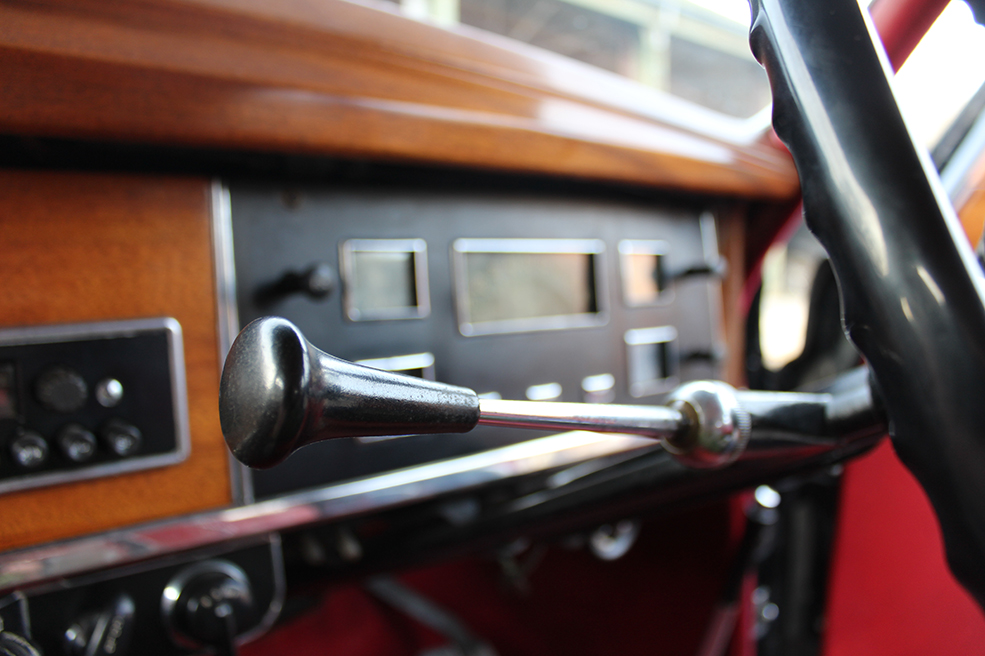
If the gearbox is quieter when you press the clutch in neutral, odds are that the layshaft bearings have worn – this is a known issue. Synchromesh on second can wear on post 1952 models – not on pre, given that the early cars only had synchromesh on the top two gears. Speaking on synchromesh on second, if the car has it always engage second before first when approaching junctions, as it prevents unnecessary wear to first gear.
This is desirable because gearbox repairs can be expensive – the car needs to be virtually stripped inside, as the seats, carpet and a section of floor have to come out to access the gearbox via the cabin. It’s not removed from underneath.
Check the Laycock overdrive unit, though don’t be worried if it doesn’t engage below 50mph. And don’t be surprised if it disengaged on all barring the 110 if you push the throttle hard – much like a kickdown switch. That mechanism can fail, but it’s not the end of the world.
The 105R model has its own unique “Roverdrive” gearbox, a two speed automatic with a fluid flywheel and overdrive. This box is not efficient, and comes with a penalty for both economy and performance, but it tends to be reliable. Spares, however, are hard to source. While they share their oil with the engine, many owners will miss the drain point on the gearbox and old oil can be left swilling round for years. Check it’s been done.
Finally, many P4s came with a freewheel prior to the introduction of overdrive. Don’t let it scare you, it’s odd at first but makes more sense the more you experience it.
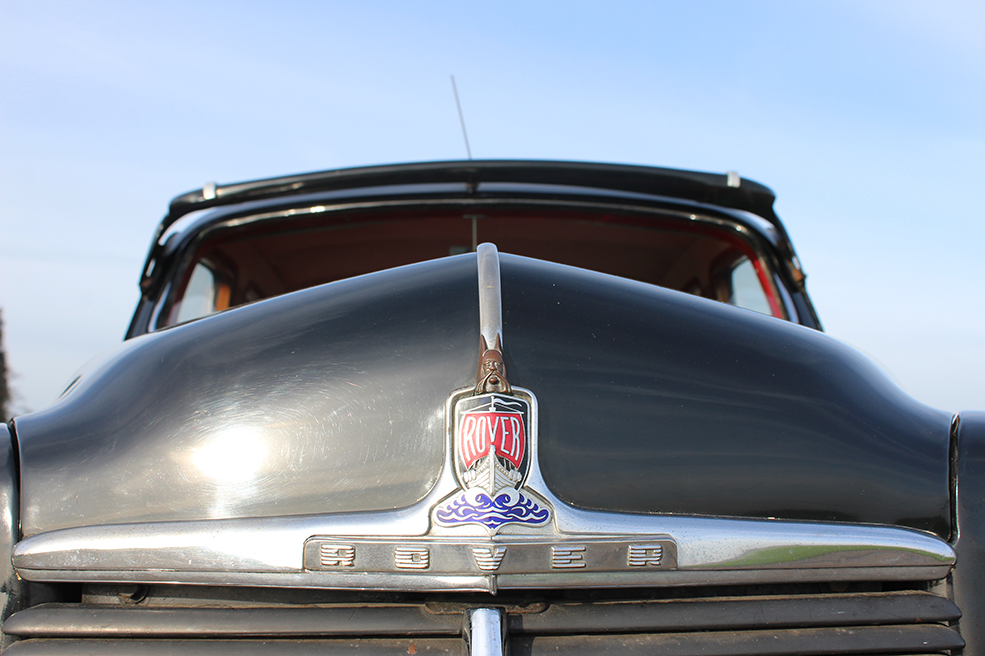
Suspension, steering and brakes
Steering is by kingpin, couples to a steering box and idler. These should be filled with oil, not with grease, so make sure it’s not had a well-meaning owner use the wrong product. Failure to keep these oiled will cause wear, which will make the car unroadworthy – despite the MoT exemption these cars enjoy they should still be capable of passing. Loose steering is a worn follower within the lid of the steering box, and vagueness isn’t to be expected. Rover P4s typically have good, tight steering for their size and age.
Front bushes can cause clonks – typically the top link bushes. This can be a DIY job but beware the front springs will have to come out to do most of the other bushes around the nose. We’d advise that this is a specialist job. Springs temper with age and cause the nose to sit high – unlike rear springs which sag with age, causing an untoward leaning effect.
Check for oil around the rear brake back plates, and walk away if you’re not happy. Outer driveshaft seals can leak, which can in turn contaminate the brakes. To cure this the driveshaft needs to be removed; a big job which some owners ignore.
Cars equipped with disc brakes can suffer seized calipers, especially if (as many are) they’re left idle for long periods over the inclement months. Servos can fail, which can also cause brakes to seize on, but replacement Lockheed servos are available that will do a far more effective job provided an original look isn’t vital. John Wearing sells them complete with fitting kits. Check for white exhaust smoke, which suggests that not only has the servo failed but that it’s drawing brake fluid through the inlet manifold.
Snapped bleed nipples can give trouble. Don’t worry too much if you find a car that’s had P5 brakes fitted as they’re cheaper, but they’re perhaps a little too positive on the rear end so it’s better to find a car with correct brakes fitted. If the handbrake is anything other than top notch, check to make sure the linkage hasn’t seized.
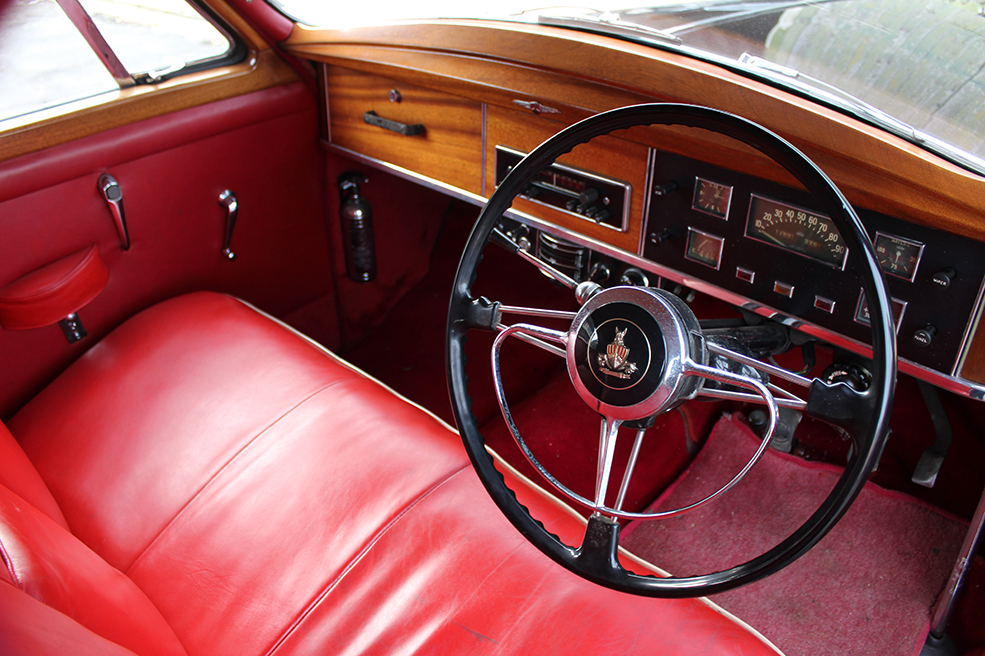
Interior and trim
The interior trim in a P4 is unlikely to pose any serious problems. This is a car from the era of craftsmanship – no nasty plastics in here, it’s all wood, leather and vinyl trim. Which suits restorers because any semi competent trimmer will be able to replicate the seat patterns and the woodwork. We’d still advise finding a car with good trim though – which it can all be done, trimmers don’t usually come cheap.
Minor chromed trim items might be difficult to source on the open market, but making use of clubs such as the Rover P4 Drivers Guild will ensure that not only do potential restorers have access to advice, but to members’ spares supplies. That sort of part shouldn’t be hard to find, which is a good job as rechroming is rarely successful.
The Wilton can easily be lifted to check the floorpans or replaced. Water ingress will typically pool in the front corners of the floors, usually on the nearside – so check this area thoroughly. If there’s water, it’s likely to have come in through the screen.
Rover P4: our verdict
The Rover P4 is not only good value for money but the nicest driving car of its era in the 2.5-litre saloon class. Not only that, but it’s a better drive than the later P5 and holds up well against cars over a decade newer. We grant that its styling may be a little staid for some, but behind is lies craftsmanship of a type you simply don’t see any more, and considerable engineering forethought.
With four and six cylinder options aplenty there will be a Rover P4 to suit your needs, and the practicality that made them so admired when new translates well into a regular use or family classic today. The Rover P4 Drivers Guild is on hand with as much help and support as any enthusiast could need, and the Land Rover world should be able to help with all bar a few minor mechanical spares. It’s a car you can’t help but love.
There are few finer examples of a solid, luxurious 1950s saloon than than the Rover P4. It’s a homely car built to a standard rather than a price, with driving dynamics which belies its era – and best of all, it remain relatively affordable. It’s a car that sits among the very best cars of its era – and especially as a classic ownership proposition today.
MODEL TIMELINE
1949
Rover P4 makes its debut with the 75, featuring a 2.1-litre six-cylinder engine developing 75bhp.
1952
Distinctive ‘cyclops’ grille revised, with more conventional slats and the loss of the central fog lamp.
1953
Four-cylinder Rover 60 launched using the engine from the Land Rover Series 1, with six-cylinder 2.6-litre Rover 90 also added to the range. Sidelights mounted on top of the front arches, curved central gear lever replaces column change.
1954
David Bache-led facelift includes raised rear quarters to increase the boot size, and a new three-piece rear window. Flashing indicators replace reflectors at the front.
1956
Front wings revised again with indicators positioned higher. High-compression 105R and 105S models join the range, the former using a two speed ‘Roverdrive’ transmission, the only British-built automatic transmission at the time.
1959
New 100bhp 100 model arrives to replace the 90 and 105, featuring seven-bearing 2.6-litre engine. At the same time, the 60 is replaced by the new 2.25-litre Rover 80.
1962
100 replaced by the 95 and 110. Both cars use the same 2.6-litre six cylinder engine in different states of tune – the 95 with economy gearing as a six-cylinder 80 replacement, the 110 with more power than the old 100. Later cars have steel doors.
1964
Production ends with 130,312 P4s built. By this point the Rover P6 junior executive car has entered production.

